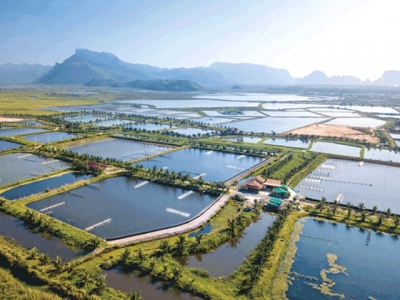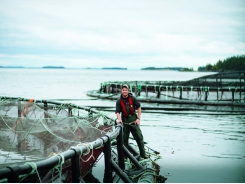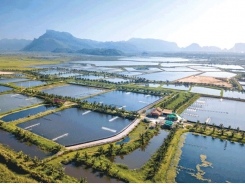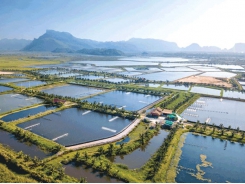Land Based Sustainable Aquaculture Strategy - Part 3

5/ A single species or polyculture
Monoculture, or the culture of a single species at any given time, is the most common form of aquaculture in NSW. ‘Polyculture’ is the growing of more than one species together in the same culture facility which can help maximise productivity. Polyculture can provide for greater economical use of water, feed and energy.
The integration of aquaculture with an agricultural use (eg. hydroponics, rice, trees) can be a valuable sideline to an aquaculture business. It can greatly increase the economical use of water and energy.
Temperature
Water temperature is one of the most critical environmental factors affecting the growth and health of aquatic species. Each species has a preferred water temperature at which biological functions, including growth, are optimal.
It is important to consider climate (temperatures) when selecting a site for species grown outdoors as minimum and/or maximum temperatures may be lethal.
Feed
Intensive and semi-intensive aquaculture generally requires a high degree of management, high stocking levels and the feeding of formulated diets. Higher production rates can be achieved when using formulated feeds specific to the selected species. However, not all species readily accept pellets (eg. Australian bass and golden perch) and some species are difficult to wean during early hatchery stages. Consequently, there has been limited progress in the culture of some of these species.
Dietary requirements vary significantly between species and need a good balance of protein, energy, minerals and vitamins to meet the physiological requirements of the selected species.
Often due to the lack of specific dietary research, feeds targeting other species are utilised. However, there is some danger in taking this approach often resulting in poor growth, fatty animals or poor resistance to disease and husbandry issues.
Feed costs often constitute 40 to 55% of total production costs, therefore it is essential to use species that convert food efficiently and use efficient feeding practices. Species that have high meat to total body weight ratio are desirable because of their more efficient conversion of feed into edible flesh.
If you plan to market your product for human consumption, you need to obtain a vendor declaration or written statement from the feed manufacturer stating that the feed is suitable for feeding to food producing animals.
Hatchery and Seed stock
A caution
Aquaculture ventures incorporating a hatchery wishing to produce fingerlings for stocking NSW waters will need to be accredited under the NSW Hatchery Quality Assurance Scheme.
A critical issue for any aquaculture venture is the reliable availability of seed stock (juveniles). Some aquaculture growout ventures incorporate juvenile production into their business whereas others are reliant on sourcing stock from other farms and hatcheries. Generally, hatcheries require specialised infrastructure and technical expertise beyond that required for growout operations. However, having control over hatchery operations offers clear advantages to the growout farm including selection and reliability of stock. Some species are only available once per year whereas others may be more frequently available due to manipulative breeding techniques within the hatchery. It is important that a new ventures carefully research the availability of seedstock to make sure the hatchery is capable of producing the quantities of seedstock to satisfy the farm’s projected production plan.
Some important aspects a hatchery needs to consider when managing broodstock and seed stock are:
- maintenance of genetic diversity and avoidance of inbreeding;
- production of disease-free stock;
- seed stock are not contaminated with other species;
- maintaining a bio-secure site.
Broodstock can be collected from the wild in NSW under the authority of a I&I NSW permit, grown and maintained in a hatchery or purchased from a commercial supplier. Ventures wishing to undertake hatchery operations should be familiar with the NSW Hatchery Quality Assurance Scheme (HQAS) and the rules and regulations relating to broodstock collection and species.
Có thể bạn quan tâm
Phần mềm

Phối trộn thức ăn chăn nuôi

Pha dung dịch thủy canh

Định mức cho tôm ăn

Phối trộn phân bón NPK

Xác định tỷ lệ tôm sống

Chuyển đổi đơn vị phân bón

Xác định công suất sục khí

Chuyển đổi đơn vị tôm

Tính diện tích nhà kính

Tính thể tích ao hồ




 Land Based Sustainable Aquaculture Strategy - Part 4
Land Based Sustainable Aquaculture Strategy - Part 4  Land Based Sustainable Aquaculture Strategy - Part 2
Land Based Sustainable Aquaculture Strategy - Part 2